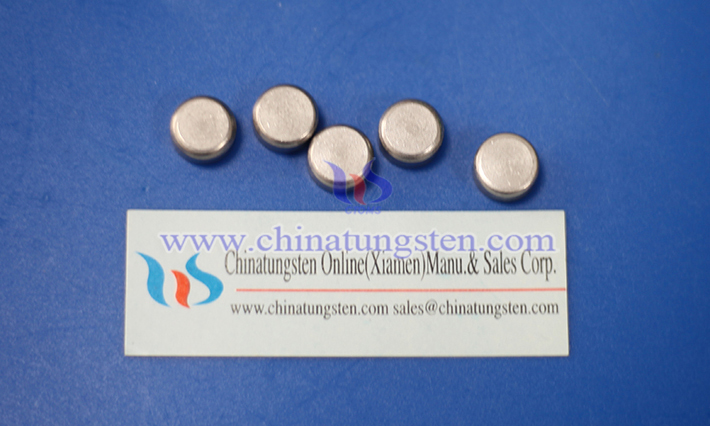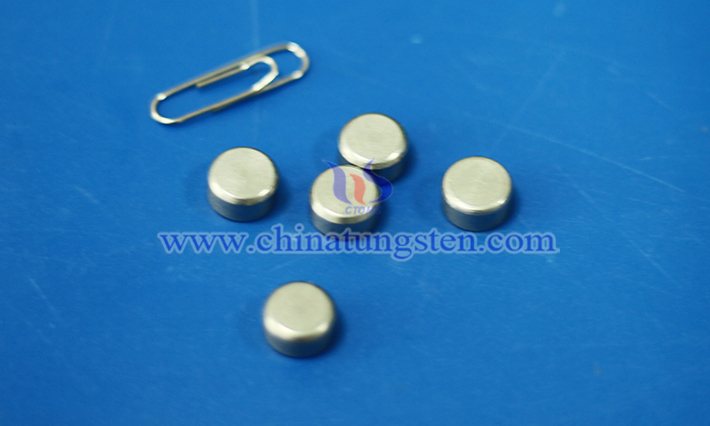Analysis of the Anti-Ablation Performance of Barium Tungsten Electrode
- Details
- Category: Tungsten Information
- Published on Friday, 06 June 2025 18:34
Barium tungsten electrode is widely used in high-intensity gas discharge lamps, electron tubes and other fields due to its excellent electron emission performance and high stability. Its anti-ablation performance, that is, the ability to resist material loss under extreme conditions such as high temperature and high current, is a key indicator for evaluating its service life and stability.

Ablation refers to the phenomenon that the surface material of the electrode is lost due to physical or chemical processes under harsh working conditions (such as high temperature, arc or ion bombardment). In practical applications, barium tungsten electrodes may face the following ablation mechanisms: (1) Sputtering: Ions in arc or plasma bombard the electrode surface, causing surface atoms to be knocked out. (2) Evaporation: High temperature directly vaporizes the barium compound or tungsten atoms on the electrode surface. (3) Chemical reaction: In a specific gas environment (such as an oxygen-containing environment), the electrode material may react with the gas, accelerating the loss. The quality of the anti-ablation performance depends on the ability of the electrode to resist these processes to extend its service life and maintain performance.
The anti-ablation performance of the barium tungsten electrode benefits from the synergistic effect of its material properties and structural design:
(1) High temperature resistance of the tungsten matrix: The high melting point and strong atomic bonds of tungsten enable it to maintain structural integrity at high temperatures and have strong resistance to evaporation. At the same time, tungsten has a large atomic mass and a low sputtering yield, which effectively reduces the material loss caused by ion bombardment.
(2) Self-repair mechanism of the emission material: The barium compound impregnated in the tungsten matrix can continuously diffuse to the surface to replenish the barium lost due to ablation. This "reserve" design ensures that even if the surface material is lost, the internal barium can still maintain the electron emission performance of the electrode.
(3) Pore structure optimization: The porosity and pore size distribution of the tungsten matrix affect the diffusion efficiency of barium ions. Appropriate pore design can increase the diffusion rate and enhance the electrode's anti-ablation ability.

The anti-ablation performance of the barium tungsten electrode is affected by the following factors:
(1) Operating conditions: High temperature, high current density and strong arc will accelerate ablation. For example, an increase in the electrode surface temperature may lead to an increase in the evaporation rate of the barium compound. In high-power applications, extreme conditions may shorten the electrode life.
(2) Material purity: The purity of the tungsten matrix and the emitter material is critical. Impurities may reduce the sintering quality of tungsten or affect the stability of the barium compound, thereby weakening the anti-ablation performance.
(3) Matrix microstructure: Porosity, pore size distribution and grain size affect barium ion diffusion and the mechanical strength of the electrode. A uniform pore structure helps to extend the life.
(4) Emitting material composition: In addition to barium aluminate, other barium compounds (such as barium strontium tungstate BaSrWO₆) have been explored due to their higher stability. The addition of activators can further optimize the barium release efficiency.
- Chinatungsten Online: www.tungsten.com.cn
- CTIA GROUP LTD: en.ctia.group
- Tungsten News & Price: www.ctia.com.cn
- Molybdenum News & Price: news.molybdenum.com.cn
- Tel.: 86 592 5129696; Email: sales@chinatungsten.com



 sales@chinatungsten.com
sales@chinatungsten.com